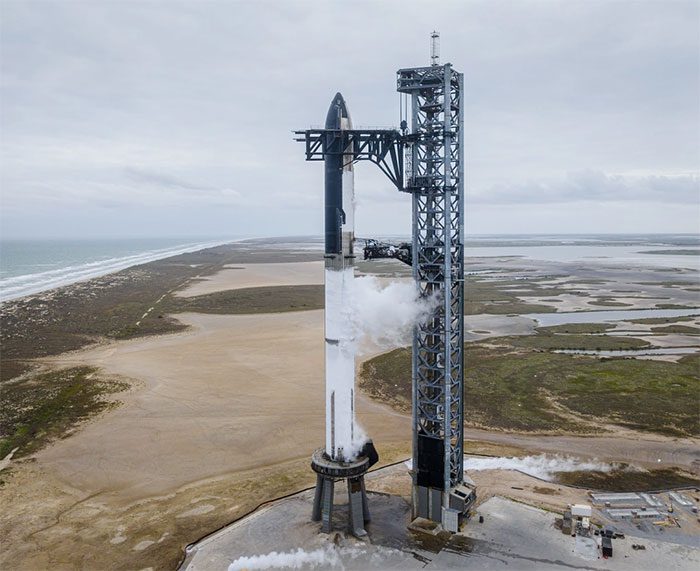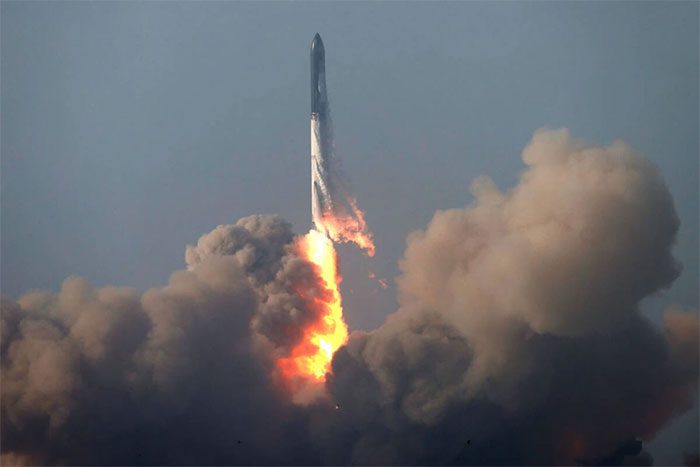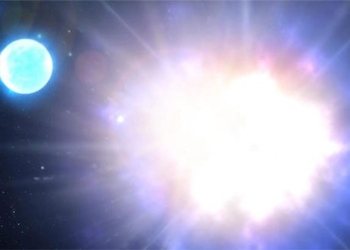The launch date for the Starship rocket has been announced, but SpaceX has yet to secure the necessary permits from the U.S. government. This situation has left NASA in a state of anxiety.
The reason NASA selected the Starship rocket for transporting astronauts to the Moon is scheduled for 2024.
SpaceX has stated: “The Starship test launch could begin on November 17.” However, while the agency is prepared for the upcoming launch, Elon Musk is awaiting approval from the Federal Aviation Administration (FAA) and other regulatory bodies.

The Starship rocket is designed for complete reusability and is chosen by NASA to transport astronauts to the Moon as part of the Artemis program (Photo: Space).
NASA Eagerly Awaits
Meanwhile, NASA is closely monitoring the upcoming test from SpaceX. If the event fails, it could significantly impact NASA’s Artemis program, which aims to send humans to the Moon in 2024.
The launch from the Starbase launch site in Texas will mark SpaceX’s second test flight of the world’s largest rocket, Starship. The agency conducted the first test flight in April, but it exploded shortly after takeoff.
“Starship is set for launch as early as November 17; we are awaiting final approval from the regulatory agency,” SpaceX shared on social media platform X.
CEO Elon Musk added that whether the Starship rocket launches this month depends on government approval for the test flight.
Upgraded Starship
Starship is the most powerful rocket in the world. It stands nearly 121 meters tall, can carry payloads of up to 165 tons, and is designed for complete reusability.
SpaceX aims to use Starship for transporting people and cargo for deep space missions, as well as for offering lunar flyby trips for space tourists, for which the agency has previously opened service packages.
Notably, this rocket also serves as the vehicle for astronauts in NASA’s Artemis mission to the Moon. However, first, Starship must prove that it is ready and safe for service.

The Starship rocket during its first test, which had to be destroyed shortly after takeoff. (Photo: 2GB).
SpaceX conducted the first Starship test flight on April 20, but the rocket encountered issues during stage separation, and several of the 33 Raptor engines in the first-stage booster did not operate stably.
This forced scientists in the control center to destroy the rocket in mid-air a few minutes after launch.
For the upcoming test flight, SpaceX has modified several procedures. Specifically, during stage separation, the second-stage booster engines will be ignited while still attached to the first-stage booster.
SpaceX engineers have also developed a new sonic boom suppression system during the rocket’s ascent.
The second test flight is planned to be similar to the first, with SpaceX launching the rocket to a designated point in space and landing it off the coast of Hawaii to test the rocket’s return technique. The first-stage booster will land in the Gulf of Mexico after completing stage separation.
The first flight of the Starship provided many lessons that directly contributed to several upgrades for both the vehicle and ground infrastructure, aimed at improving the success rate for future flights.
The second test flight will debut the hot stage separation system and a new electronic Thrust Vector Control (TVC) system for the Raptor engines. Engineers have also upgraded the reinforced materials for the pad, flame deflector, new cooling systems, and various other improved equipment.
SpaceX has built a new water deluge system to protect the launch pad and the Starship rocket from the immense power generated by the 33 Raptor engines equipped on the first-stage booster.
Environmental Review Underway
During the test flight on April 20, the engine system created a massive crater beneath the launch pad, sending debris and concrete blocks falling back onto the Starbase facility and the surrounding area.
The flood control system from the launch pad has also affected the local environment. The U.S. Fish and Wildlife Service is reviewing the potential environmental impact it may have on wildlife and plant life in the Boca Chica Wildlife Refuge.
Simultaneously, the FAA is continuing its environmental review. The agency is consulting with the U.S. Fish and Wildlife Service (USFWS) regarding the Biological Assessment under the Endangered Species Act before granting SpaceX the launch permit.
Therefore, SpaceX’s statement regarding the upcoming launch event on November 17 remains uncertain.





















































